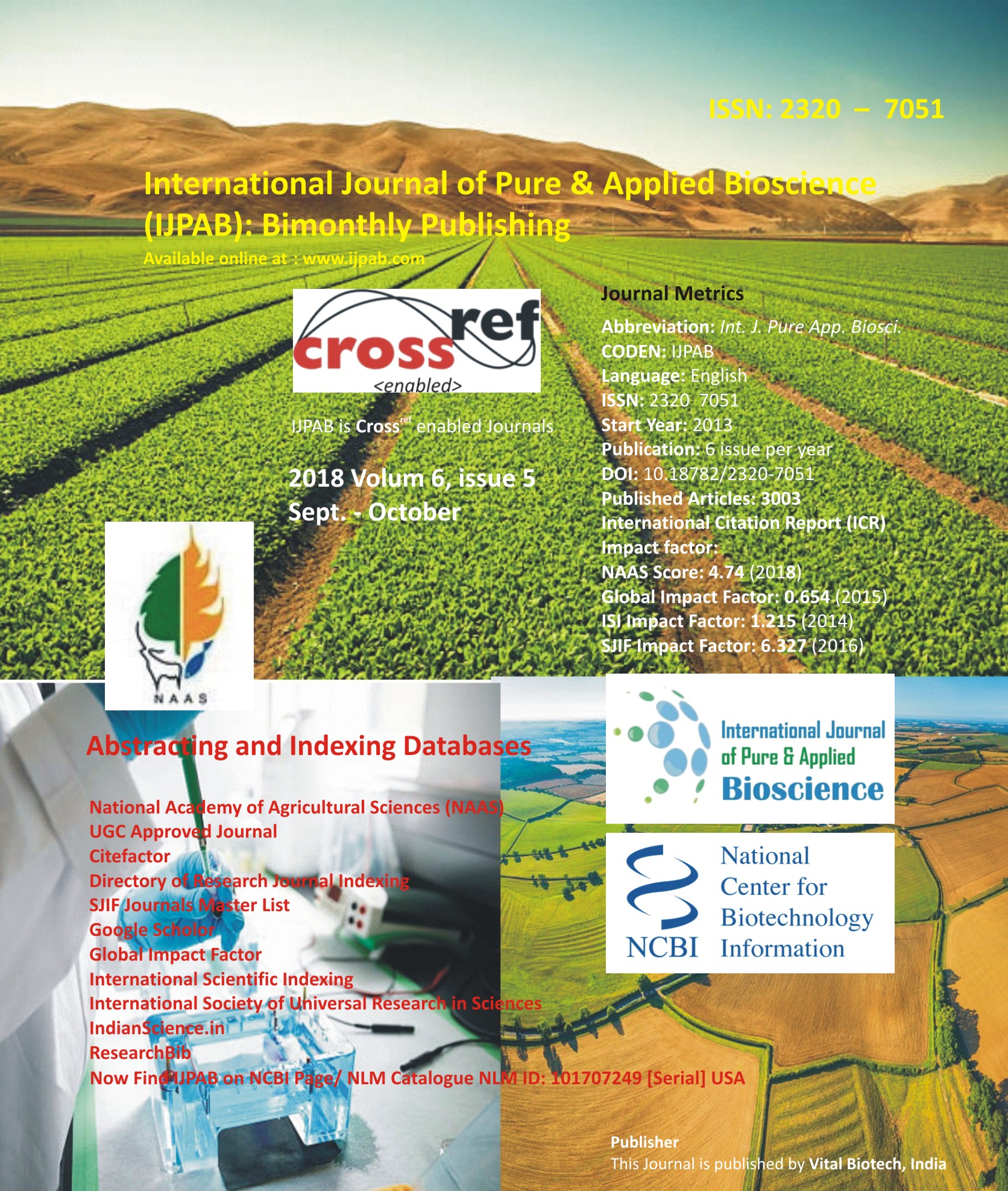
-
No. 772, Basant Vihar, Kota
Rajasthan-324009 India
-
Call Us On
+91 9784677044
-
Mail Us @
editor@ijpab.com
International Journal of Pure & Applied Bioscience (IJPAB)
Year : 2018, Volume : 6, Issue : 5
First page : (198) Last page : (204)
Article doi: : http://dx.doi.org/10.18782/2320-6676
Management of Brinjal Shoot and Fruit Borer, Leucinodes orbonalis through Eco-Friendly Approaches
S. Umamahesh, K. Manjula* and B. Ravindra Reddy
S.V. Agril. College, Tirupati – 517 502, Acharya N G Ranga Agricultural University, A.P.
*Corresponding Author E-mail: kambham19691970@yahoo.co.in
Received: 29.06.2018 | Revised: 26.07.2018 | Accepted: 7.08.2018
ABSTRACT
A field experiment on evaluation of eco-friendly management approaches for against key Lepidopteran insect pest of brinjal i.e., shoot and fruit borer, Leucinodes orbonalis was conducted during late Kharif season 2015-16 in the Insectary premises, Department of Entomology, S.V.Agril.College, Tirupati, Acharya N.G.ranga Agricultural University. A total of 11 treatments were imposed including farmers practice. Except farmers practice, all the treatments were composed by combining different environment friendly components. The components includes 3 organic manures i.e FYM , Vermicompost, neem cake; important cultural practices i.e. clipping of infested shoots, collection of infested fruits, their destruction at regular intervals; use of egg parasitoid, Trichogramma chelonis and application of safer insecticides i.e Azadirachtin, spinosad. From 10 to 60 days after transplanting, mean shoot damage was recorded and from 60 to 120 days, mean fruit damage was recorded at 10 days interval. The shoot damage by L. orbonalis was comparatively lowest (24.67) in T11 i.e. farmers practice. Among the ten ecofriendly treatments, T3 (Basal application of FYM @ 8 t/ha + clipping of infested shoots at 4 days interval + collection and destruction of bored fruits at every harvest + application of spinosad 45% SC at 30 and 50 DAT @0.01%) and T7 (Basal application of vermicompost @ 6 t/ha + clipping of infested shoots at 4 days interval + collection and destruction of bored fruits at every harvest + application of spinosad 45% SC at 30 and 50 DAT @ 0.01%) recorded lower shoot damages viz., 28.33 and 27.33 per cent. Lowest mean number of damaged fruits (15.12) were recorded in T11 i.e. farmers practices. In T7 and T3, 17 to 20 per cent fruit damage was recorded. Highest yield of fruits was obtained in T11 (8115 kg ha-1) followed by the T7 (6630 kg ha-1) and T3 (5655 kg ha-1).
Key words: Brinjal, Shoot and fruit borer, Leucinodes arbonalis, Shoot damage, Fruit damage on number basis, Safer methods
Full Text : PDF; Journal doi : http://dx.doi.org/10.18782
Cite this article: Umamahesh, S., Manjula, K. and Reddy, B.R., Management of Brinjal Shoot and Fruit Borer, Leucinodes orbonalis through Eco-Friendly Approaches, Int. J. Pure App. Biosci.6(5): 198-204 (2018). doi: http://dx.doi.org/10.18782/2320-7051.6676

